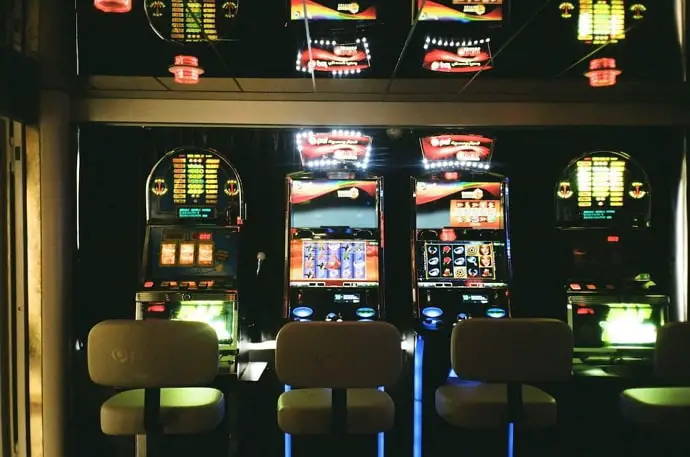In recent years, technology has been making its market on the real money gaming market, to the point where it’s now worth over $100 billion, according to Statista. The slots vertical, in particular, has been dramatically altered by digitalisation, with key innovations transforming this classic land-based game into an exciting and vastly popular virtual sector. However, the advancement of technology is far from over, and as new developments continue to emerge, the remote slots landscape is set to evolve even further.
In this article, we’ll chart key milestones in the translation of slots from being the land-based casino sector’s most popular game to the leading digital iGaming vertical, and take a look at some predictions for the future of remote slots gaming.

The History of Slots Gaming
Like several other key games you’ll find in a casino, the slot machine has its roots in the late 1800s. In San Francisco in 1895, a mechanic by the name of Charles Fey invented the ‘Liberty Bell’ mechanical slot machine (a.k.a. the ‘one-armed bandit’). Comprised of three spinning reels, with five symbols (diamonds, hearts, horseshoes, spades, and the eponymous bell) and a lever, the machine offered gamers a simple but exciting way to test the laws of chance.
As the 20th century got underway, these same machines became increasingly popular across the bars and saloons of the US and made their way internationally into casinos, pubs, and, by the mid-1900s, leisure resorts.
Up until around the 1960s, slots still featured the same mechanical design as Frey’s original Liberty Bell, but the integration of electrical components would bring about the first major revolution in slot gaming. Electrical slot machines, which incorporated microprocessors and the first iterations of random number generators (RNGs), were able to offer players more advanced features, such as interactive gameplay, bonus rounds, and multiple paylines.
21st Century Transformations
Of course, the most dramatic impact that innovation has had on the development of remote slots gaming happened during the transition to online gaming towards the end of the 20th century. By the mid-90s, the first online casino platforms began to emerge, which offered a wide range of digital slot games to players across the globe. These games effectively replicated the gameplay of land-based slots and fruit machines in the digital realm, but in a convenient and highly accessible format.
With gaming technology advancing at an unparalleled rate from the year 2000 and beyond, it wasn’t long until the humble one-armed bandit became a cutting-edge iGaming powerhouse. Within less than a decade, numerous pioneering platforms hit the market that enabled players to not only dive into slots online, but also to access a vast array of gaming formats, from 3-reel slots like 777 Deluxe to Golden Buffalo and other hot drop jackpots. Enhanced graphics, high-fidelity audio, generative AI, and the rise of mobile as a viable gaming platform were all integral in developing the sector to the dynamic and immersive genre that it is today.
Currently, the sector is populated by gaming platforms (via mobile or desktop) typically providing access to slots titles that fall under any of the following categories:
- 3-reel slots: digital versions of the classic land-based gaming machine, which are made up of three reels and feature simple rules and gameplay.
- 5-reel slots: often packed with bonus features like wilds and scatters, as the name suggests, 5-reel games have a greater number of paylines.
- 7-reel slots: the 5-reel format maximized, seven reel games have even more bonus features and typically deliver more paylines and ways to win than any other category.
- 3D slots: immersive and highly-realistic, 3D titles take slot gaming to new levels with highly engaging gameplay and bleeding edge graphics.
- Progressive jackpot slots: offering the highest payouts, which can even reach six figures in some titles, progressive jackpots feature prize pools that increase in size the more they’re played.
Future Innovation in Remote Slots Gaming
As we’ve touched on above, the remote slots gaming sector has transformed significantly in less than three decades. Tech developments as a whole are showing no signs of slowing down, despite the gains that have been made, so what are the future innovations that could play a role in shaping the genre in 2024 and beyond?
Cryptocurrencies and blockchain tech are currently making their mark on several segments of the global gaming industry, and remote slots is no exception. While new crypto gaming projects are launching on an almost continual basis, we’re starting to see more established iGaming companies pivot towards accepting cryptocurrencies as valid methods of payment and withdrawal.
Integrating crypto into remote slots gaming is advantageous in several ways. It increases the security and transparency of gambling transactions, since all crypto transactions are recorded on a blockchain ledger, and it’s also working towards making iGaming attractive to a new, tech-savvy generation of consumers.
It would be remiss to mention blockchain and crypto without discussing the potential impact of the Metaverse on slots gaming. Although still in its infancy, the concept of the metaverse is already sending ripples throughout the gaming industry as a whole, with a number of major gaming studios prioritizing Web3 development. As for how it could impact future slots games, Extended Reality (XR) has the potential to unleash previously unattainable levels of immersion, placing players directly inside slots games and even introducing cooperative, multiplayer elements.

 Bitcoin
Bitcoin  Ethereum
Ethereum  Tether
Tether  XRP
XRP  Solana
Solana  USDC
USDC  Dogecoin
Dogecoin  Cardano
Cardano  TRON
TRON